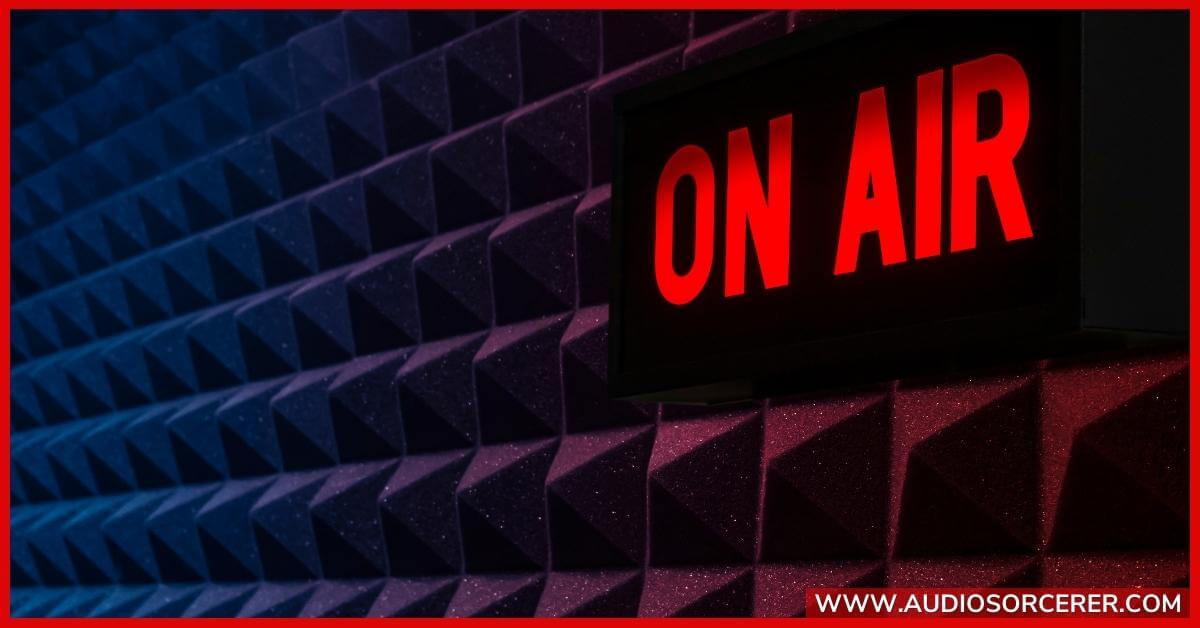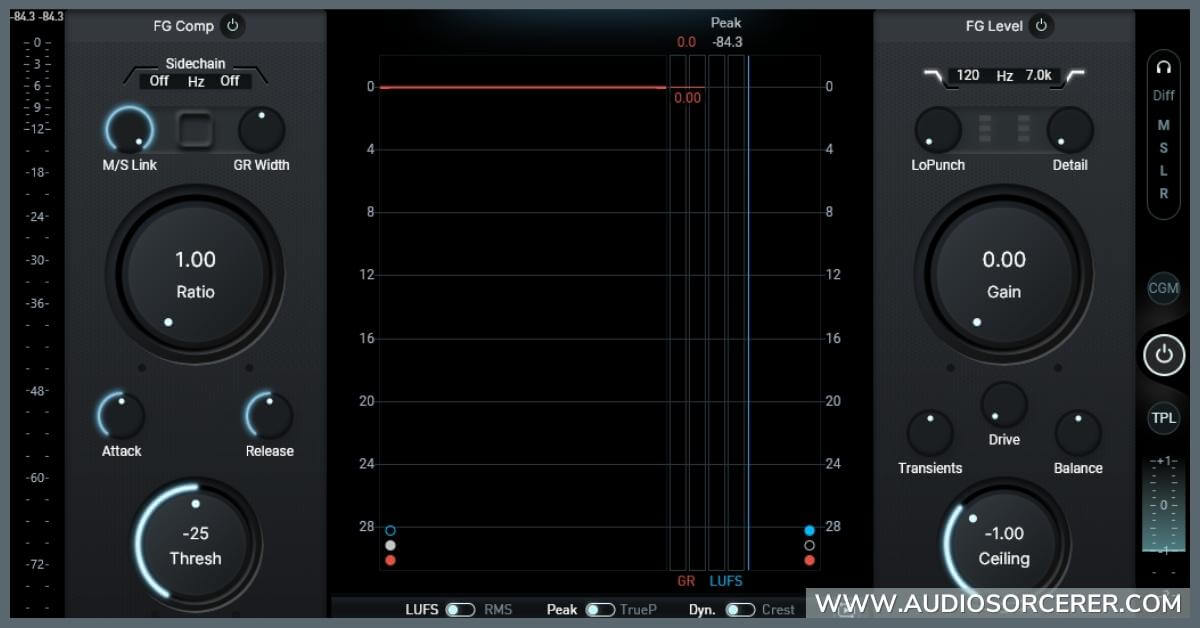
In the intricate world of audio mastering, there's an important process called 'true peak limiting' you must be aware of. Just like a volume control, it keeps sound levels in check. It's become really important because of streaming services like Spotify and Apple Music.
What does it do exactly? Well, it defines the loudest level a sound can be and makes sure no signal goes over that point.
Even though it might seem complicated, understanding true peak limiting isn't that tough. Once you get it, you'll see how useful it is in different areas like music production, radio broadcasting, and even creating podcasts.
To learn more about the importance of true peak limiting in audio, read on!

The phrase "true peak limiting" refers to a powerful technique in audio production which controls the maximum levels of an audio track in the digital domain. This process ensures that the audio's sound is free of digital clipping or distortion that can disrupt the audio listening experience. True peak limiting, thus, is often a final and critical step in the audio mastering process.
True Peak Limiting gauges the absolute highest level a waveform reaches, including those between the sample points to accurately predict what happens when the digital waveform is converted back to analog. A true peak limiter identifies potential peak overloads while selectively controlling the volume of the louder parts of an audio track to ensure the sound doesn't peak or clip. Essentially, it allows control over how loud the loudest parts of your audio can be, without sacrificing its quality.
When true peak limiting is done right it can immensely raise the quality of the final audio. Inter-sample peaks can cause distortions when converting digital audio to analog, or can get clipped when converting the audio to lossy formats like mp3. The role of true peak limiting counteracts this problem by preventing any hazardous peak levels from occurring. For instance, in streaming platforms which imposes a specific loudness standard, not capturing true peaks may result in audio clipping when the system tries to adjust the original audio to meet this loudness requirement.
Related Article: What Is LUFS? A Guide To loudness And Mastering Music

The concept of 'signal overs' pertains to instances when an audio signal exceeds a certain limit. This situation may result in distortion or clipping, which are unwanted alterations to the sound that can degrade its quality. A true peak limiter operates by detecting instances of such signal overs and reduces the level of these peaks to ensure clean and distortion-less audio output.
'Inter-sample peaks' are an important concept related to true peak limiting. These peaks are the points where the audio signal reaches its maximum level between two sample points. Standard peak limiters may miss these peaks as they only analyze the signal at the sample points. Missing inter-sample peaks can cause unintentional distortion, especially when the audio is converted to different formats or played back on various devices. A true peak limiter, however, accounts for these inter-sample peaks, providing a smoother and more accurate sound representation.
Oversampling is a technique used in digital audio processing to get a better picture of the audio signal's behavior between the samples. In essence, it involves creating extra sample points within the original samples to more precisely determine the maximum levels of the audio signal. This eliminates potential inaccuracies from only analyzing the digital signal at the original sample points and helps to improve the effectiveness of peak limiting.
In relation to true peak limiting, oversampling permits the limiter to identify peaks that would have remained undetected with traditional methods. This enables the limiter to operate more accurately and ensure optimum audio quality. This method is especially crucial when working with high-frequency content or very dynamic material, where inaccuracies can significantly affect the final product.

During the mastering stage, engineers use true peak limiters to ensure audio does not clip when formatted to lossy compression types such as MP3 or AAC. The limiter functions by lowering the level of the audio signal, if it surpasses a certain limit set by the sound engineer. This results in the production of pristine, distortion-free audio.
In the broadcasting industry, true peak limiters are used to comply with audio normalization standards like the ITU-R BS.1770 series which stipulate the use of true peak limiters for managing audio loudness.
For television broadcasting, true peak limiting ensures the sound levels are compliant with local regulation standards and prevents excessive peaks that could cause potential damage to broadcasting equipment.
For radio broadcasting, in conjunction with compression, true peak limiting serves to maintain a consistent user experience by preventing drastic jumps in audio level when transitioning between songs, adverts, and talk segments.
Podcasting is another field where controlling true peak values is important. Many podcasting platforms like Audible have specific true peak level requirements. Non-compliance with these specifications can lead to outright rejection of the podcast episode.
Related Article: Understanding RMS in Audio: A Beginner's Guide

Choosing the right limiter settings is critical for managing the audio levels accurately during audio mastering. The ideal limit depends on the type of content and desired loudness. Many audio engineers typically set their limiter to -1.0 dB True Peak to maintain some headroom and avoid audio clipping. The threshold setting should allow the track to breathe without unnecessarily triggering the limiter, and the release time should be adjusted to prevent undesirable pumping effects.
To prevent distortion when using a true peak limiter, it is crucial to not push limits excessively. Increasing gain into the limiter can cause it to work harder, which can deteriorate the quality of the audio and introduce distortion. Make sure to constantly monitor the audio to ensure that the mix is clean. Tip: Shoot for 4 dB of gain reduction at the loudest parts of a song.
Preserving audio quality during peak limiting demands an optimal resolution and format. Working at high resolution, such as 24bit or 32bit float, provides more headroom and reduces the risk of digital clipping. Additionally, the correct choice of output format is vital. For example, oversampling should always be used when encoding to lossy formats like MP3 or AAC to avoid inter-sample peaks that can induce distortion.
There are numerous software options available for true peak limiting. Most Digital Audio Workstations (DAW) come with built-in limiters that can detect true peaks. However, specialized plug-ins may provide more control and functionality. Always use software that provides true peak metering and limiting, as traditional sample peak limiting can miss inter-sample peaks, potentially leading to distortion.
Check out our favorite true peak meter and limiter, Izotope Ozone 10 Maximizer.
Embracing the best practices in true peak limiting proves instrumental in achieving professional audio quality and preventing unwanted distortion.
The intricacies involved in selecting the appropriate limiter settings in audio mastering, form an integral part of this engaging exercise. Furthermore, understanding the effects of true peaking on differing audio formats bolsters the potential for creating superior sound outputs.
Stepping into the practice of true peak limiting demands a conscious exploration of its technical elements, coupled with an application-driven approach. As such, it's a fascinating journey, from comprehending the core concepts to applying them in real-world settings.
"Some of the links within this article are affiliate links. These links are from various companies such as Amazon. This means if you click on any of these links and purchase the item or service, I will receive an affiliate commission. This is at no cost to you and the money gets invested back into Audio Sorcerer LLC."